Have you heard of the ASUSTOR? I'll admit that when I was approached to do this review, I had never heard of the company before. Formed in 2011 with funding from ASUSTek (ASUS), a company well-known in the industry for making motherboards and other tech gear, ASUSTOR's mission is "providing the world with an unparalleled user experience and the most complete set of network storage solutions possible."
I'm a big fan of personal storage for a number of reasons, not the least of which is having control over your own data, so the idea of another top notch competitor in the field piqued my interest and I jumped at the chance to review the ASUSTOR AS3304T.
Specifications
The ASUSTOR AS3304T is powered by the Realtek RTD1296 Quad-Core 1.4 GHz CPU which is based on the ARM64 architecture. The NAS device supports DDR4 memory, which is great since it's much faster than standard DDR3L that is in many devices, but unfortunately the AS3304T only has 2GB of RAM and is not expandable. The device also has 2.5GbE networking for an extra performance boost if your network supports this speed, which is rare amongst its competitors.
There are four drive bays in the AS3304T, providing capacity up to 80TB in a JBOD setup. I suspect most people will configure the device with RAID-5, which will use one of the four disks for parity, leaving you with a max of 60TB of usable space. The AS3304T also supports up to three AS6004U expansion units, which would allow up to 12 extra disks, greatly expanding the capacity.
| CPU | Realtek RTD1296 Quad-Core 1.4 GHz CPU |
| Memory | 2GB DDR4 (not expandable) |
| Disk Capacity | 80TB (20TB x 4); 320TB with three AS6004U expansion modules |
| Network | 1x2.5 GbE |
| USB Ports |
1xUSB 3.2 (front), 2xUSB 3.2 (back) |
| Size (H/W/D) | (6.7 in x 6.85 in x 9.06 in) / (170 mm x 174 mm x 230 mm) |
| Weight | 4.85 lbs / 2.2 kg |
From a network connectivity perspective, the ASUSTOR AS3304T has only one Ethernet port, but it's a 2.5 GbE connection. This is a nice performance boost if your network supports it. After reviewing the QNAP TS-453D, I'm a fan of 2.5 GbE, but sadly, there are very few devices that actually support this speed and even fewer network devices. It's also unfortunate that the AS3304T doesn't have multiple ports to support link aggregation.
The AS3304T has a total of three USB 3.2 ports, with one on the front and two on the back. These ports can be used to support the aforementioned AS6004U expansion units. There's also a button to quickly copy files to/from a USB drive if you configure that functionality.
Finally, there's a Kensington lock on the back of the device.
Hardware Installation
The whole point of a NAS device versus building your own is in its simplicity, and the AS3340T delivers. Simply plug in the power cable, connect an Ethernet cable, turn the box on, and you're done.
Connecting hard drives to the AS3340T is also an easy endeavor. The included sleds are toolless, allowing you to simply snap your hard drives into place, and then slide the sled into a slot on the NAS device. The sleds also support 2.5" drives, such as SSD, but in order to mount those into the sleds you'll need to screw it into the bottom of the sled with the included screws.
It's important to note that the AS3340T does not have any drive locks built in. This means there's no way to prevent someone from accidentally (or on purpose!) removing a drive from the NAS, unlike on Synology and QNAP. Since ASUSTOR focuses on the home market, this is probably not as much of a concern as it would be in an office, but if you have children who like to poke around at things, you'll want to keep the AS3340T away from them.
Initial Setup and Installation
As you would expect from a NAS device, the initial setup consists of following instructions from a straight forward wizard interface. I've included the steps in this gallery of images.
The process is simple. Start by downloading the ASUSTOR Control Center application onto your computer. This tool works the same way as the Synology Assistant and Qfinder Pro does, and is simply a way to identify all of the ASUSTOR devices on your network without having to manually find the IP address.
Selecting the NAS device from the Control Center prompts you to insert disks into the device, then initialize it with the latest version of ASUSTOR Data Master (ADM), the operating system for the NAS device. Once the installation is complete, the wizard guides you through a few more setup details such as the appearance (dark vs. light theme), and whether you want custom settings or the defaults.
If you go the custom route, you're prompted to create a new admin account, select the timezone and date format, decide which NTP server you're going to use for time, configure the IP address and DNS servers, and finally create a volume to store data. Once this process is complete, you're dropped into the ADM interface.
Please note that while the screenshots show a two disk volume, all of my testing was done with a re-created four disk volume.
After creating the volume, there will be a few shared folders setup by default. If you want to make a new one, the process is simple: Click "Add" in the Shared Folders menu, give it a name and description, grant access rights for the folder, review the setup, and click "Finish."
Performance
As with all of my NAS reviews, in order to test performance and bypass the PC as much as possible, I used OSFMount to create a 4GB RAM disk and then used Robocopy to test throughput between my desktop and the AS3304T. The volume on the ASUSTOR AS3304T was created as a RAID-5 using the ext4 filesystem, which was the default when it was created.
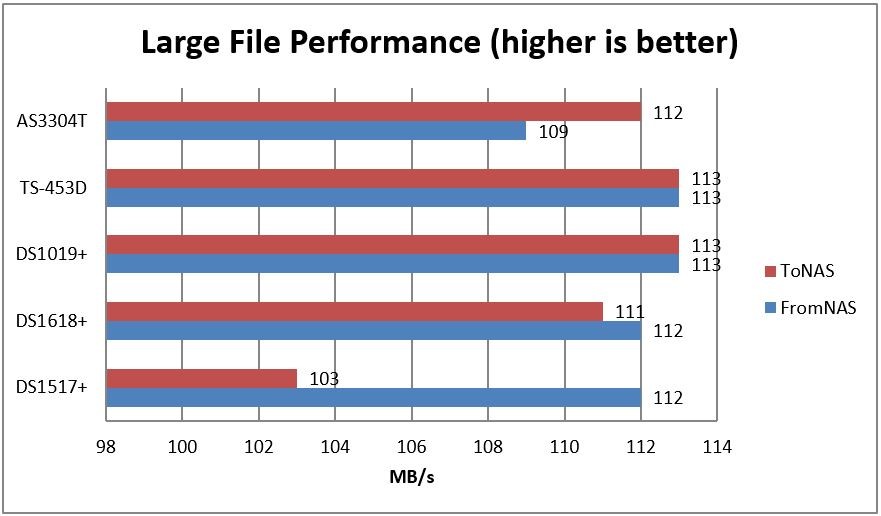
My first test is copying large, 3GB files to and from the NAS device. Copying a large file is easier for a disk because the drive can read and write sequentially, so performance is always better with these types of tests. The AS3304T was able to read at around 109 MB/s and write at 112 MB/s, which is pretty close to the theoretical maximum speed of Gigabit Ethernet.

Where things became a little more surprising was in the small file test. Here, I copied roughly 3GB of small MP3 files to and from the NAS device. Generally performance in this test is significantly slower. In this case, the AS3304T managed a write speed of roughly 84 MB/s, and a read speed of roughly 77 MB/s. These speeds are good, but not the best we've ever seen with a NAS device. Much of this is probably due to only having four drive bays, although not having much memory for caching could also be a factor. Still, the results are acceptable.
As noted earlier, if you want to get even more performance out of the ASUSTOR AS3304T, you can connect it to a 2.5 GbE network or, since most people don't have a switch that supports that speed, connect it directly to your PC if it has a 2.5 GbE port, although this prevents anything else on the network from accessing the device. For my test, I connected it directly to my PC's 2.5 GbE port.

Performance, as expected, was significantly better using the 2.5 GbE, although not as high as I would have expected. Moving small files back and forth between the NAS and the RAM drive on my computer yielded roughly 110 MB/s, an almost 40% increase. Copying large files to the ASUSTOR AS3304T gave speeds of 145 MB/s, a 35% increase. The biggest improvement was copying large files from the NAS onto my PC. This clocked in at 190 MB/s, or a 70% improvement over Gigabit Ethernet speeds.
While this performance is good, it's actually slower than the recently reviewed QNAP TS-453D. I suspect this might be in part due to the ASUSTOR AS3304T having less RAM, and thus less filesystem caching ability, but regardless it's still a good performance increase for a device that costs significantly less than the competitor.
Disk Management
When things are setup and working smoothly, things are great, but what happens if there's a disk failure? Luckily, ADM handles this type of issue extremely well.
For my test, I started with four disks (three 1TB drives and one 2TB drive) in a RAID-5 configuration.
In order to simulate a disk failure, I pulled the 2TB drive from the array to see what would happen. As expected, the AS3304T started beeping and an error message displayed on the ADM interface. At this point, my volume was in danger because another disk failure would corrupt the entire array.
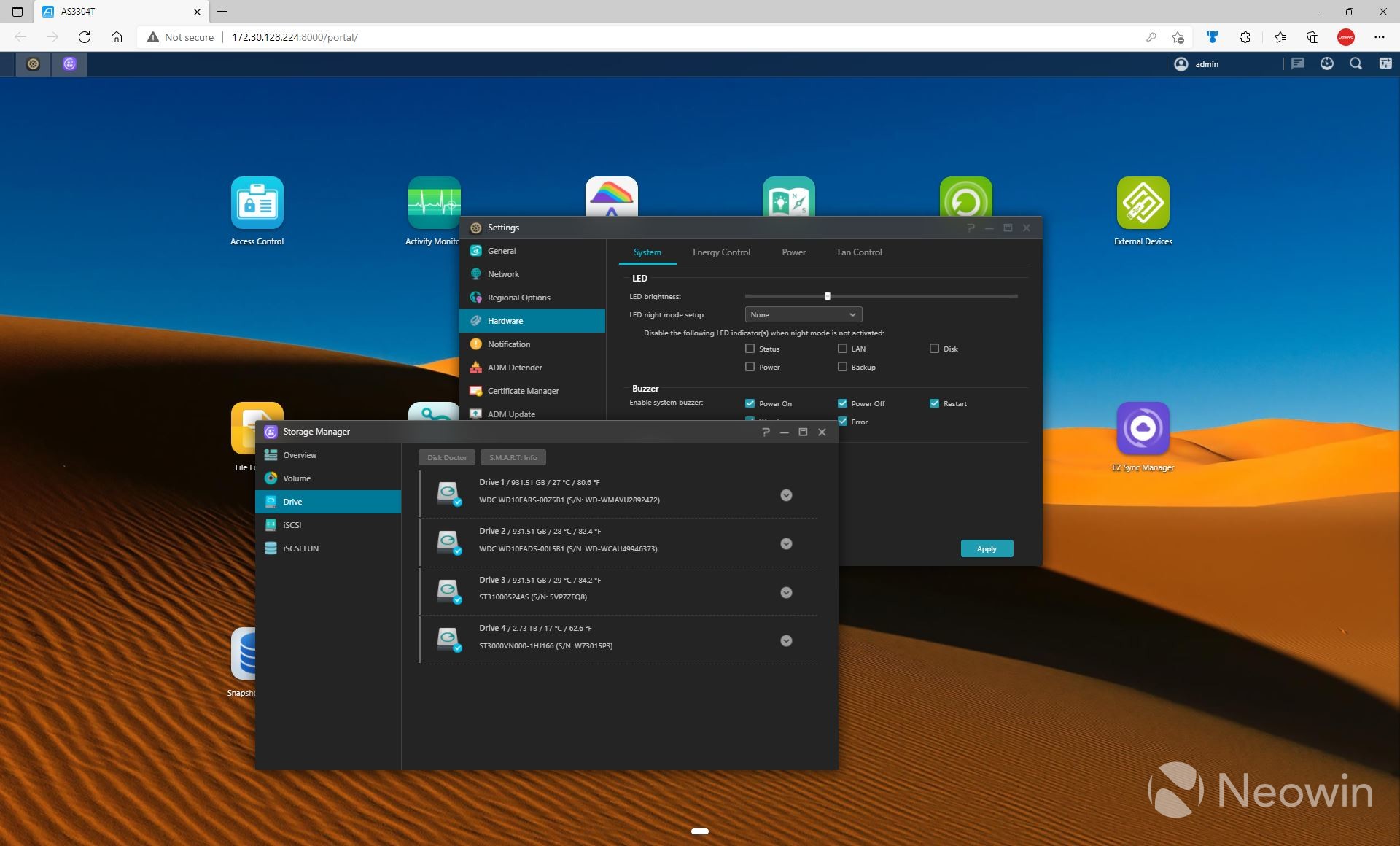
I inserted a spare 3TB drive I had in my lab to simulate replacing the failed drive. Once the disk was recognized, the beeping stopped and the new drive was instantly recognized in Storage Manager.

Clicking over to the volume, I saw that ADM began rebuilding the array automatically without any extra intervention. From an ease of use perspective, this is a great feature as Synology requires you to login to the interface and explicitly approve using the disk in the volume. However this also means that if you accidentally plug in the wrong drive, the data will be overwritten almost immediately, so be careful.
Applications
ASUSTOR utilizes App Central as the place to find applications to run on the NAS device, and I'm very impressed with the variety of apps available and how many of them are actually managed by ASUSTOR versus third parties.
There are still some rough edges when it comes to installing applications. For example, one of the applications is called "Geo IP Database" and the description is simply, "Geo IP database for ADM Network Defender." It sounds like an administrator should be able to download this and somehow import it into the firewall to automatically block areas of the world that may be deemed unsafe from a cyber security perspective. However once it was installed, I couldn't figure out how to import it into ADM Defender, and outside of App Center itself, had no idea I even installed the database. Some documentation would've been helpful.
Another example of this is around Docker. Once you install Docker, there's no way to actually manage any of your containers until you install the Portainer CE application, but there was no indication of this from the Docker-ce application itself. I would understand this if the packages were maintained by a third party, but both of these examples are maintained by ASUSTOR.
On the other hand, some things are handled extremely well. For example, ClamAV, a popular open source anti-virus solution, is available and managed by ASUSTOR. Simply install it, and you can have it scan any files on your NAS for viruses and either alert, quarantine, or delete them. This tool isn't available on Synology.
Overall, this is a very competive appstore with a wide range of options, and I like the fact that ASUSTOR maintains many of the packages themselves.
Miscellaneous
Overall, the ASUSTOR AS3304T looks and feels like a premium device. The front cover that protects the drives snaps into place with the help of magnets, the rose gold logo in the upper-right stands out, and the angles just make the device look cool. On the downside, the face cover is made from a glossy black plastic that seems to attract every piece of dust and pet fur in the house, so keeping it clean is difficult.
I was a little surprised at the lack of hard drive locks on the individual trays or on the cover in general, but honestly, in most settings, this probably isn't very useful anyway. If you're worried about someone pulling out a drive, make sure to put the NAS in a closet away from prying fingers.
Speaking of closets, I have to say that, although I have no scientific evidence, the AS3304T seems louder than most of the other NAS devices I've reviewed. The noise is almost entirely from the hard drives, so I suspect the enclosure just doesn't contain the noise as well as some of the competitors. This isn't a big deal if, as noted above, you're putting the device in a closet, but if it's going to stay right next to you, it's worth considering if the clicking sounds from the drives is going to be a deal-breaker.
Finally, the interface isn't bad, but some things seem harder to find than I would expect. For example, I found a section under Settings called "Scheduling," that lets me pick what are considered peak and off-peak hours, but I wasn't able to find a way to setup a scheduled task, like kicking off a script or automatically restarting a service at a certain time. I can enable SSH and setup a cron job, but the reason I want a NAS device is to avoid having to manage it like a server. I suspect this will be improved upon over time.
Conclusion
The ASUSTOR AS3304T is lacking some of the features of its competitors. It only has a single Ethernet port, the drives have no physical locks, and it's a little louder than other devices I've reviewed. The lack of expandable memory is also big omission in my opinion. While the AS3304T will work great as a regular file sharing device, you'll be limited in what apps and Docker containers you can run with it due to the lack of memory. For many people, that's a fine tradeoff, but since ASUSTOR has such a large app store, the omission is a bit puzzling.
That said, the AS3304T performs well compared to the bigger names and costs hundreds of dollars less, making a it a compelling choice if you don't care about some of the features like link aggregation. The 2.5 Gigabit Ethernet port is great if you have that capability in your network or if you want to use it as private storage since many motherboards now include the port. If you're looking for a device purely for file sharing or backups, the ASUSTOR AS3304T is definitely worthy of your consideration and is poised to only get better with time.
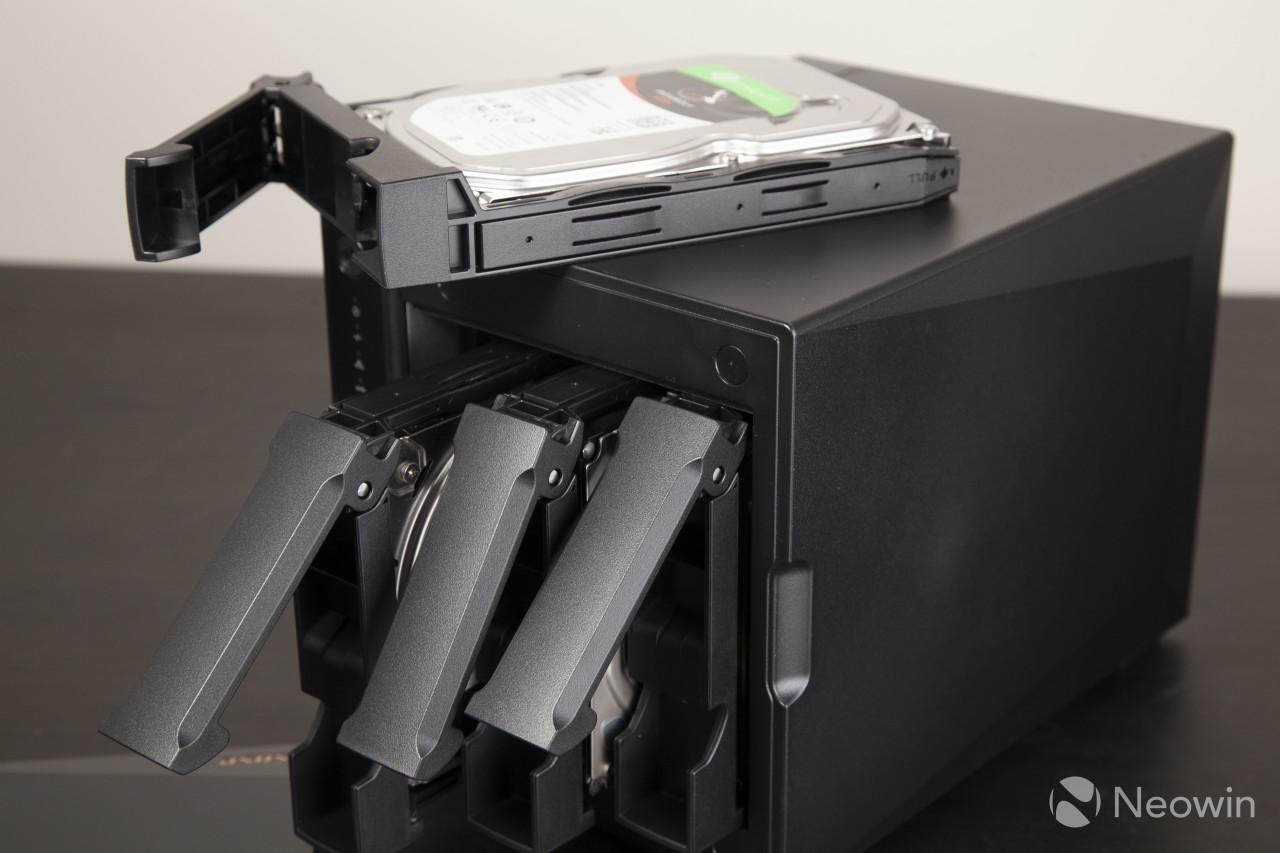

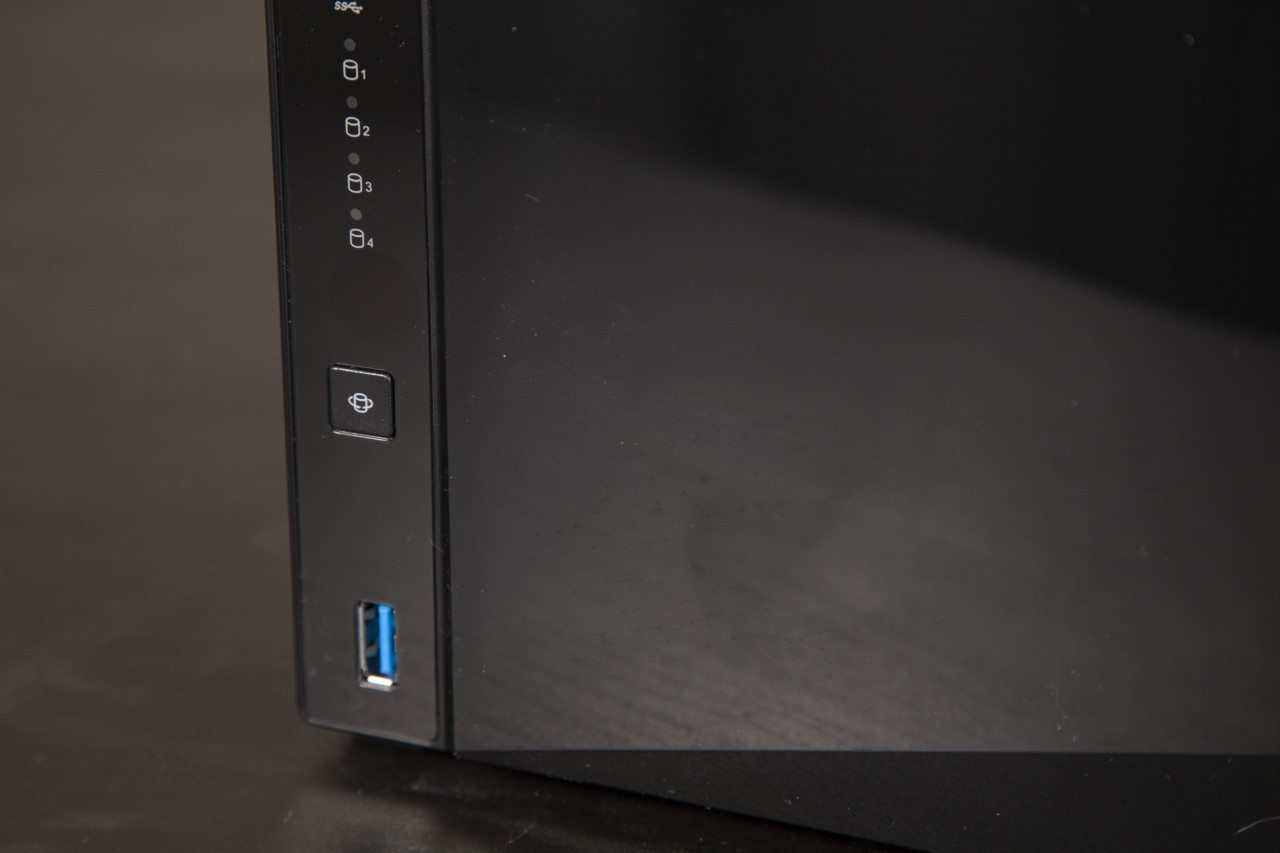

















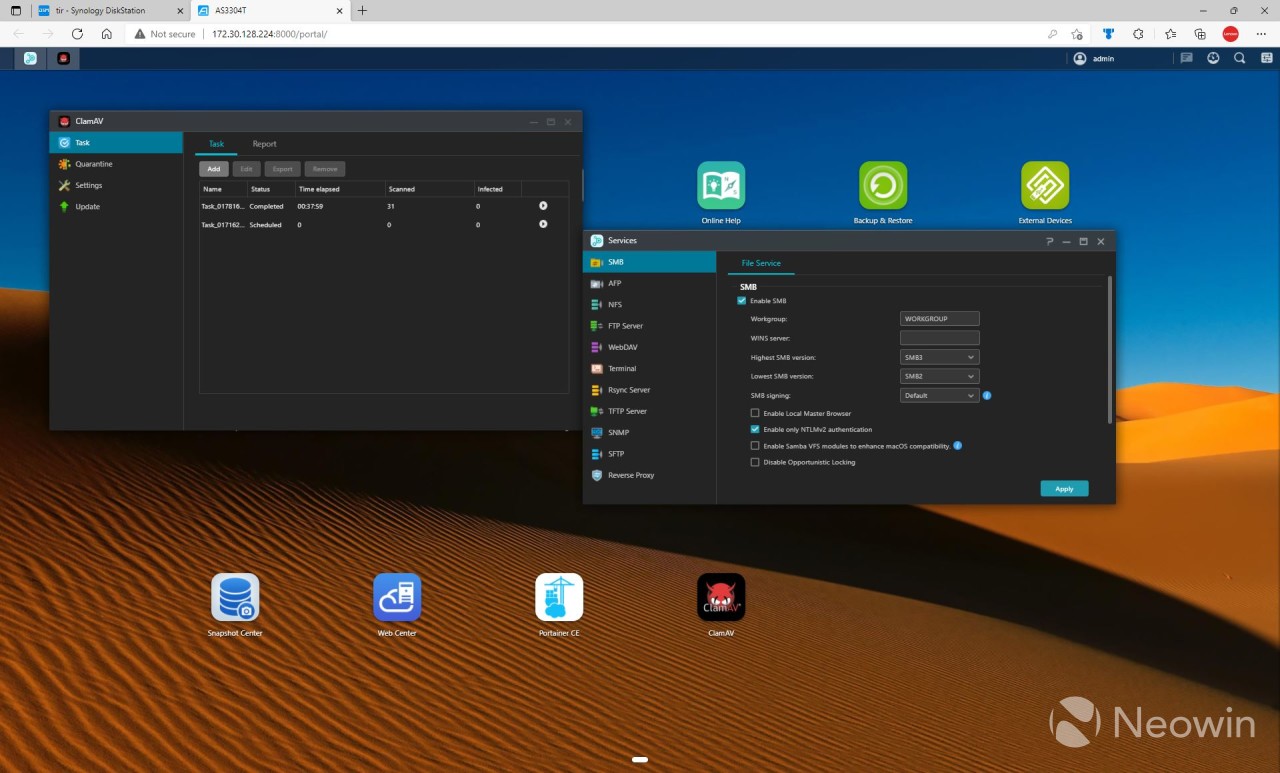












3 Comments - Add comment